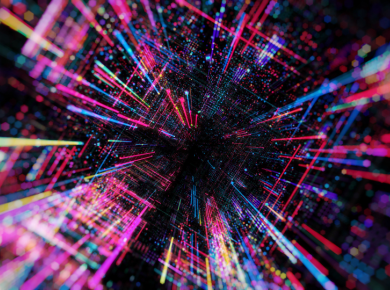The Evolution of Software Architecture Through the Generations
With a new generation of developers entering the workforce, the approach to learning software development is changing.
3 December 2024 | By Armando Franco, Director of Business Modernisation Services, TEKsystems Global Systems

On average, baby boomers and Generation X (traditionalists) have entered the workforce using their learned mental repository of manual coding expertise. Millennials and the newest addition to the workforce, Generation Z (contemporaries), are advocating for AI tools to supplement manual coding to boost efficiency and innovation.
The Traditional Approach: Memorisation and Manual Coding
In the early days of coding, technical expertise was prioritised above all else. Traditional software technologists received training to become efficient and independent problem-solvers.
Learning and memorising code allowed traditionalists to excel and develop expertise. But it was also out of necessity – traditionalists did not have the technology to leverage automated coding.
Navigating issue resolution within coding requires speed and confidence. Committing code to memory allowed traditional coders to deepen their knowledge and expand their problem-solving abilities.
While today’s technological advancements hold their origins within manual coding – and provide a deep understanding of its core principles – they’re also susceptible to human error and allow less creative freedom and innovation.
The Contemporary Approach: Leveraging AI and Automation Systems
Millennials and Gen Z architects are increasingly integrating AI into their workflows (DeepCode, CodeWhisperer, GitHub Copilot, GPT-4, Google Gemini) to compete with the demands of real-time changes. AI can sift through vast amounts of data, identify patterns and complex issues, and solve problems to significantly enhance productivity and innovation.
Gartner predicts that by 2027, 50% of enterprise software engineers will use machine learning-powered coding tools (up from 5% in 2023).
AI has also been a catalyst in the software architecture evolution – prioritising creativity and the ability to communicate technical concepts to stakeholders.
However, the increasing reliance on AI poses its challenges. The risk? Overdependence on AI for strategising and problem-solving, potentially creating distance in the foundational skills crucial for understanding the intricacies of software architecture.
Comparative Analysis: Blending Traditionalist Values With Contemporary Innovation
The solution to generational differences lies in blending the mindsets of tradition and innovation. The role of an architect, engineer or technologist is to learn continuously. An aversion to adopting new skills and services inevitably limits growth.
Contemporaries who learned through AI and prompt engineering still need to concrete their skills in rudimentary IT practices. IP addresses, networking and other foundational development features are crucial to solidifying one’s ability as a coder.
Enterprise IT organisations are adopting and using the cloud; however, their security and applications often remain based on fundamental values, processes and strategies. Contemporaries must have the skills to solve problems on platforms established before the modern cloud and AI programmes.
Trends and Predictions in Software Architecture Evolution
AI within software architecture and development will continue to expand. Future technologists will become more sophisticated and learn to leverage advanced tools in their practices. Teams will grow to accommodate greater and more fine-tuned abilities.
Maximise Technology for Ensured Growth
Technologists can integrate the deep, foundational knowledge and problem-solving skills of traditionalists with the efficiency and advanced capabilities of AI tools favoured by contemporaries through a hybrid approach. Why? Because continuous learning and development ensure technologists are equipped with traditional and contemporary skill sets.
Technology professionals recognise the need for adaptability. As technology evolves, those who commit to lifelong learning and embrace AI will drive innovation. Bridging generational differences through open communication and collaboration guarantees that seasoned experts and new talent can contribute to a more dynamic and resilient industry. With both traditionalists’ deep-rooted knowledge and contemporaries’ forward-thinking capabilities being valued, the software architecture evolution is poised for a future of unprecedented growth and creativity.
LEARN MORE HERE